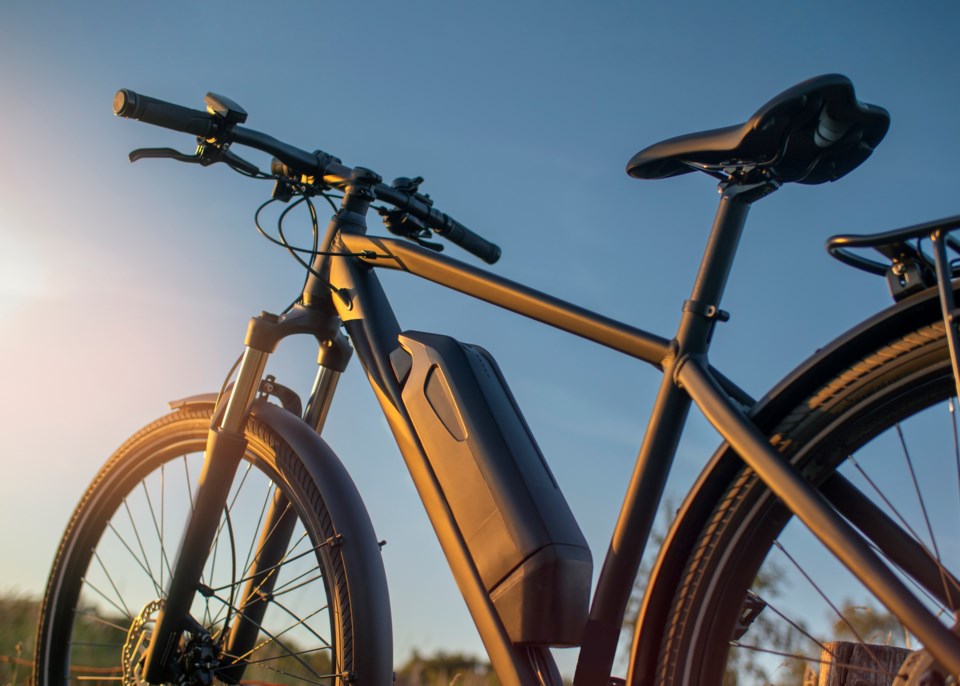Northwestern Ontario has no shortage of beautiful roads and trails for cycling.
As injury lawyers, we find that the laws around biking are not widely known, understood, or followed by the public. This information is key for riding safely and determining who is at-fault should an unfortunate collision arise. For that reason, we felt it would worthwhile to provide the public with some important legal information concerning bicycles, e-bikes, and micromobility devices in Northwestern Ontario.
Bicycles
Ontario’s Highway Traffic Act defines bicycles as:
“Bicycle” includes a tricycle, a unicycle and a power-assisted bicycle but does not include a motor-assisted bicycle.
There is no age requirement to operate a bicycle.
In Ontario, cyclists under the age of 18 must wear an approved helmet. Parents or guardians of children under the age of 16 are legally obligated to ensure that their child wears a helmet while cycling.
Helmets dramatically reduce the risk of serious brain injuries and ought to be worn for your protection. Every spring, White Macgillivray Lester LLP donates hundreds of bike helmets to children in Thunder Bay schools through the Ontario Trial Lawyers Association’s Helmets on Kids program.

You do not need a licence or registration to ride a bicycle.
You do not need insurance to ride a bicycle but theft, damage, first-party injury, and third-party liability coverage for bicycles exists. You may already have coverage under your homeowners’ insurance policy, though large deductibles and exclusions often apply. If you are an avid cyclist, speak to an insurance agent to see if you are adequately insured.
Legally, there is no prohibition against riding a bicycle while impaired by alcohol or drugs, as a bicycle does not count as a ‘conveyance’ under the Criminal Code of Canada. Doing so, however, is an extremely risky activity that can easily lead to you or someone else getting hurt. Impaired operation of a bicycle may however lead to public intoxication charges under the Liquor License Act or charges under the Highway Traffic Act or the Criminal Code of Canada if the cyclist is riding carelessly or recklessly.
Motor vehicles passing shall, as nearly as practicable, leave a distance of not less than one metre until it has safely passed the bike: Highway Traffic Act, section 148 (6.1).
Thunder Bay by-laws prohibit bikes with wheels larger than 43 cm (17”) on municipal sidewalks: Traffic by-law 40/2016 sections 1(2) and 45
Bicycles, and other non-motorized vehicles that are propelled or driven by muscular power, are permitted on the city of Thunder Bay’s vast, multi-use trail network: Traffic by-law 40/2016 section 34(3)
Bicycles are, of course, permitted in Thunder Bay’s bike lanes. Vehicles and pedestrians are prohibited from travelling in open, designated bike lanes: Traffic by-law 40/2016 section 39(5)
Bicycles shall ride as near to the right-hand side of Thunder Bay roads as is practicable. Cyclists shall ride in a single file and not abreast: Traffic by-law 40/2016 section 45
This is just a glimpse into the many rules that apply to riding a bike. It is imperative that cyclists know all of the rules of the road and practice good cycling habits. To this end, Ontario’s Guide to Safe Cycling is an excellent resource for all road users.
E-bikes
Legally, an e-bike (also called a power-assisted bicycle or electric bicycle) has:
- a handlebar for steering
- working pedals
- two or three wheels
- an electric motor
- braking systems
To operate an e-bike in Ontario, the e-bike must have:
- a maximum assisted speed of 32 km/h
- a maximum weight of 120 kg (includes the weight of the bike and battery)
- an electric motor not exceeding 500 watts
- no modifications to the motor to allow it to exceed a power output greater than 500 watts and an assisted speed greater than 32 km/h
- battery and electric motor securely fastened to the bicycle frame to prevent them from moving while the e-bike is operating
- all electrical terminals properly insulated
- minimum wheel width of 35 mm and minimum diameter of 350 mm
- two independent braking systems that applies force to each wheel and is capable of bringing the e-bike, while being operated at a speed of 30 km/h, to a full stop within 9 metres, on a level asphalt surface, from the point at which the brakes were applied
You must be at least 16 years of age to operate an e-bike.
You must wear a helmet when operating an e-bike. This is not age dependant.
You do not need a licence, insurance, or registration to ride an e-bike. Modifying an e-bike (e.g., removing its pedals) can legally turn it into a “motor vehicle” requiring a licence, insurance, and registration.
Insurance is not mandatory on e-bikes, but theft, damage, first party injury, and third party liability coverage exists. You may have coverage under your homeowners’ insurance policy, though large deductibles and exclusions often apply. If you own an e-bike, consider speaking to an insurance agent to see if you are adequately insured.
Riding an e-bike while impaired by alcohol or drugs is prohibited under the Criminal Code of Canada, as it meets the definition of a ‘conveyance’.
E-bikes are not permitted on Thunder Bay’s multi-use trails - Traffic by-law 40/2016 section 34(3)
Under its traffic by-law, the City of Thunder Bay’s definition of “bicycle” includes “power-assisted bicycles”, so e-bikes appear to be permitted in bicycle lanes - Traffic by-law 40/2016 section 34(2).
Micromobility Devices
Small, lightweight vehicles with electric motors are becoming increasing popular in Northwestern Ontario.
The term micromobility devices can describe electric scooters, electric skateboards, and electric unicycles. Electric kick-scooters (e-scooters) are perhaps the most popular of these devices.
In Ontario, an e-scooter is defined as a vehicle that has:
- two wheels (one at the front and one at the back)
- a platform to stand on
- a handlebar for steering
- an electric motor that does not exceed 500 watts
- a maximum speed of 24 km/h on a level surface
The Province of Ontario has a pilot program running from January 1, 2020 to January 1, 2025 that allows municipalities to choose where and how e-scooters may be used within their boundaries.
The City of Thunder Bay has not participated in the pilot program and e-scooters are not recognized under the city’s municipal by-laws. As a result, the laws governing e-scooter use in Thunder Bay are unclear and an e-scooter may be considered a motor vehicle under certain circumstances.
Regardless of this legal uncertainty, we urge operators of e-scooters to wear a helmet and ride with a great deal of caution given that motorists and pedestrians may be less likely to expect these vehicles on roads. All road users should focus on their surroundings at all times and watch for less common vehicles such as e-scooters.
Conclusion
Every transportation collision is different and, as you can see, several rules exist when it comes to where and how vehicles can be operated and who can operate them.
As an injury law firm, White Macgillivray Lester LLP regularly helps survivors of bike accidents navigate the complex legal systems that exist so our clients can focus on their medical recovery.
Consult a lawyer knowledgeable in injury law for legal advice.
Call White Macgillivray Lester LLP today at (807) 344-1000 or visit https://tbayinjurylaw.com/contact/ for a free consultation with one of our injury lawyers and Agents of Good.



